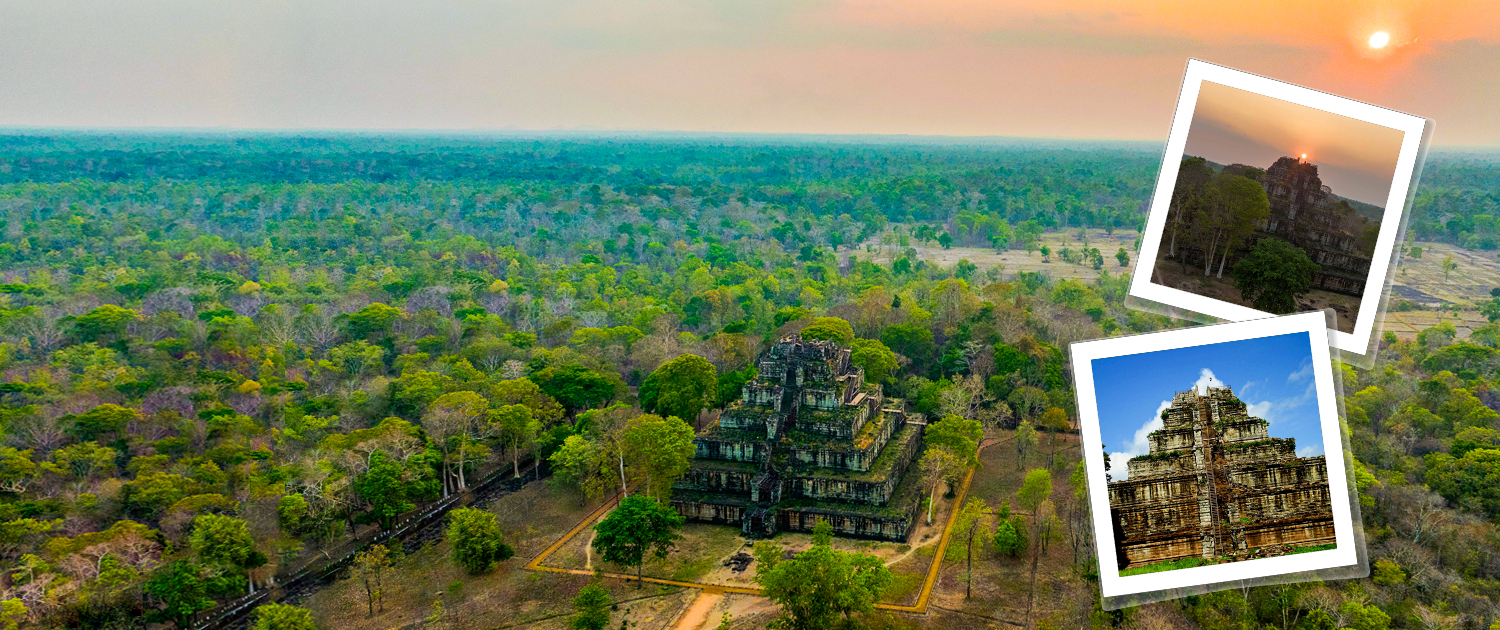This Archaeological Site of Ancient Lingapura or Chok Gargyar , translated as iron tree forest. established by King Jayavarman IV, was the sole capital from 928 to 944 CE. This was declared a UNESCO World Heritage Site on 08 July 2017.
Koh Ker, a remote archaeological site located in northern Cambodia about 120 kilometres away from Siem Reap and the ancient site of Angkor, is a jungle filled region with more than 180 sanctuaries scattered within its 81 square kilometres protected area. Inscriptions found at the site mentioned the town as Lingapura (city of lingams) or Chok Gargyar , translated as iron tree forest.
Although the structures of the overall archaeological area were constructed at variable times, the principal material used for the buildings is brick with only certain structures built with sandstone. The buildings of Sambor Prei Kuk are characteristic of the Pre-Angkorean period. Aside from the prasats, architectural features here include octagonal towers, shiva lingams and yonis, ponds. reservoirs, distinctive carvings and lion sculptures.
The whole compound covers three clusters (groups), totalling some 150 Hindu temples, mostly in ruins.
Prasat Tor (Lion temple) in the central group of temples, was built with decorative details that are similar in style to the ruins belonging to the period of king Jayavarman II of the ninth century Angkor Empire while inscriptions in Prasat Sambour (Northern Group) are dated in the tenth century under the reign of King Rajendravarman II.
Prasat Yeah Puon
Prasat Yeah Puon (Southern Group)includes 22 sanctuaries built in dedication to Shiva dated from the 7th century (600 – 635 AD) during the reign of Isanavarman I.

